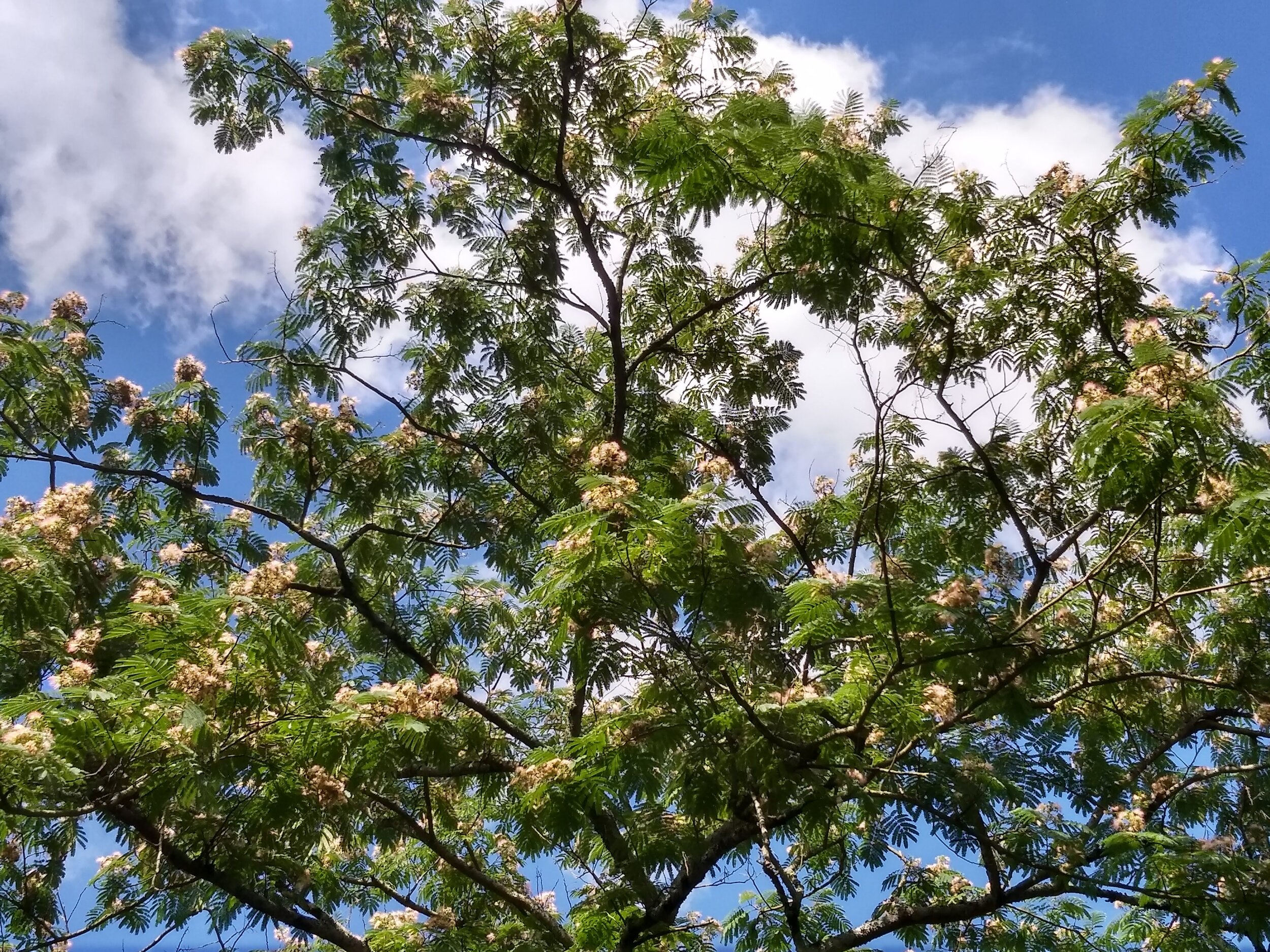
This small garden was used by the Hansell family in the twentieth-century. The Dunwody family would have had a kitchen garden in the 1840s somewhere on the property, probably further away from the house. Family letters reveal that the Dunwody family grew quince, which Jane Dunwody made into preserves and sent to her relatives in Savannah. The enslaved persons at Mimosa Hall would have tended their own, separate kitchen garden close to the slave quarters on the northern side of the property.
In the late twentieth century, the Hansell family planted lunaria, roses, herbs, camellias, quince, peach trees, and a flowering almond. Here, as in other areas around the property, fieldstones outline a bed that was probably planted by Neel Reid.
Near the Hansell’s kitchen garden, you can observe some of the property’s most beautiful trees. East of the kitchen garden, where the gravel driveway dead-ends, stands a remarkable example of a Parrotia Persica, also known as an Ironwood. The tree is around 100 years old and the breadth of its branches makes it one of the most outstanding Ironwoods in North America.
Just south of the kitchen garden, Japanses Plum-Yew trees line the pathway to the front courtyard. Across from the Plum-Yew, towering over the east lawn, stands an enormous and rare big-leaf magnolia. In the flowerbed directly in front of Mimosa Hall stands a lovely purple vitex, also known as a Chaste tee. In the summer, it boasts frilly purple blossoms. This tree appears in the earliest known photographs of Mimosa and may have been planted in the 1800s.
Just east of Mimosa Hall, beside the fig trees, stands a not-so-rare mimosa tree. Either the Dunwody family or the Hansell family had mimosa trees planted around the property in the 1800s. At that time, this non-native tree was seen as exotic and therefore highly desirable! The home, originally called Phoenix Hall by the Dunwody family, was renamed Mimosa Hall after the Civil War because of these trees on its lawn.




